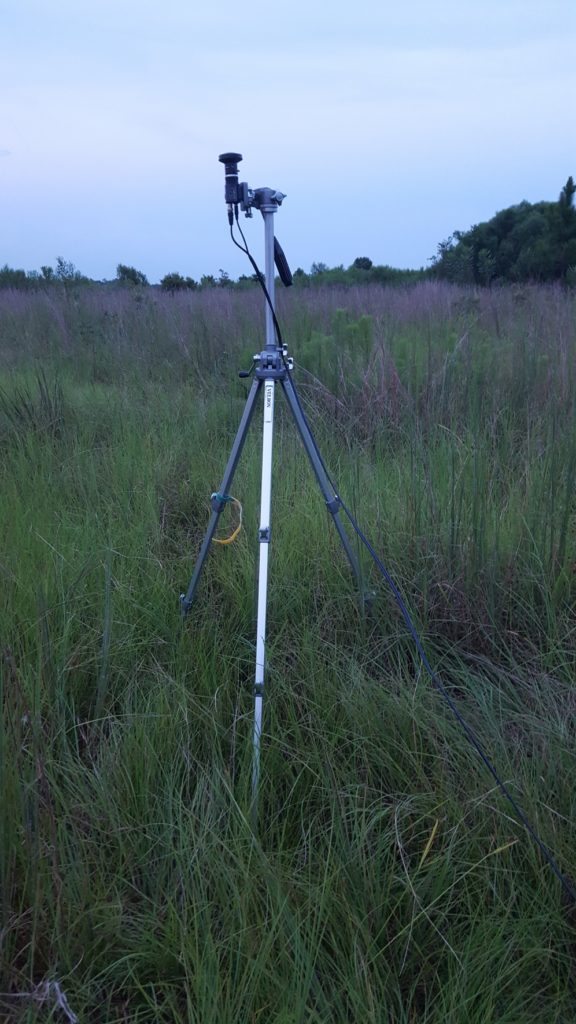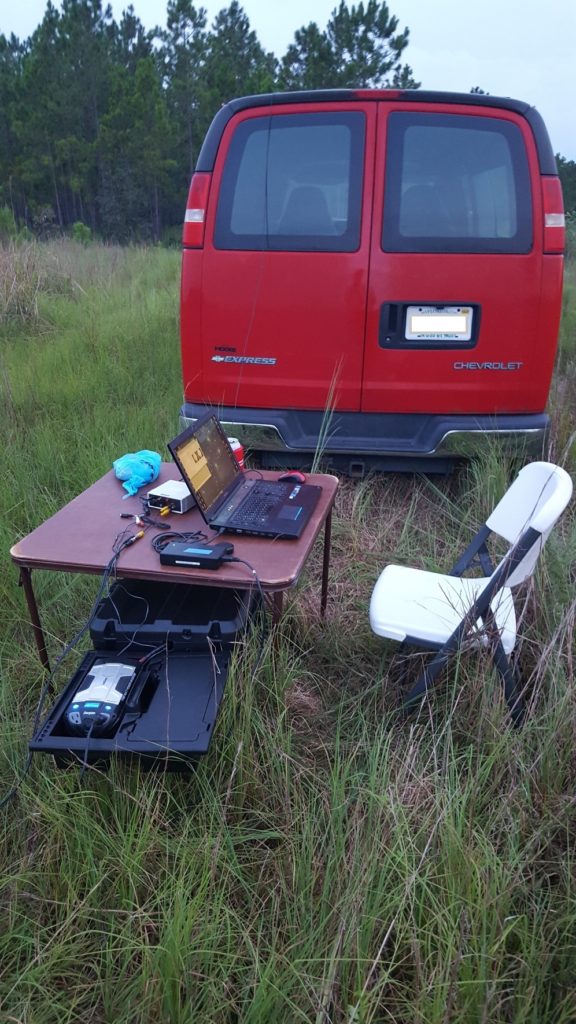The PTO has one camera dedicated to meteor search. The All-Sky camera that feeds the PTO web site Sky Conditions page and the Weather Underground can also detect meteors if they are bright enough. The problems with both of those are the tree line at the PTO and the bright local sky. I wanted a meteor camera that I can take to dark sky locations. So, I cobbled together a spare camera and a lens. I was finally able to test the system on the 12th of August. Several members of the NWFAA met at a dark site near Munson, FL to observe the Perseid meteor shower peak on Saturday evening.
The system consists of a video camera that feeds a GPS time inserter so each video frame can be time stamped. The output video stream is fed to an analog-to-USB converter dongle which then feeds a laptop running meteor detection software. In my case, the software is HandyAvi. The camera is a WATEC WAT-902H2 Ultimate and has a Fujinon 1.4mm fisheye lens on it.

|

|
I arrived at the observing site well before sunset so I could set everything up in daylight. The picture supplied by the system was very sharp and bright. But the darker the skies got, the more the picture deteriorated and by the time the sky was fully dark, the picture was so noisy as to be unusable. I tried rerouting power and signal cables and restarted the camera to no avail. So, I shut everything down, packed up and reverted to visual observation. Unfortunately, the cloud cover prevented viewing all but a couple of meteors and eventually we all gave up.
Once home I re-assembled the system in the back yard for some additional testing. I was able to reduce the noise by switching to a manual gain control mode, but even then the camera did not show anything but Vega and a local street light. The camera does not have an integrating mode so it is not as sensitive as I would like.
I regrouped and switched to a different camera. This one is a Imaging Source DMK-21AU618 USB camera and is capable of integrating its output. I don’t currently have a way to insert a time stamp. However, even if the software can detect a meteor, there is no way to know when in the integration time period the meteor struck, so a very accurate time code is not useful.
So, back into the back yard. During the test, the PTO was running an asteroid observing plan. Notice the dome tracking the night sky. There are flashes from local traffic and what appears to be one short satellite trail. Just by looking at the star patterns, the limiting magnitude is right about 6.0. Not only are the star clouds of the Milky Way visible, about 5 seconds into the video, the Andromeda Galaxy comes into view. It is only a small fuzzy smudge, but it is visible. Just before the video ends some glare from the rising Moon starts to intrude. The video is a animation assembled from 282 twenty second exposures.